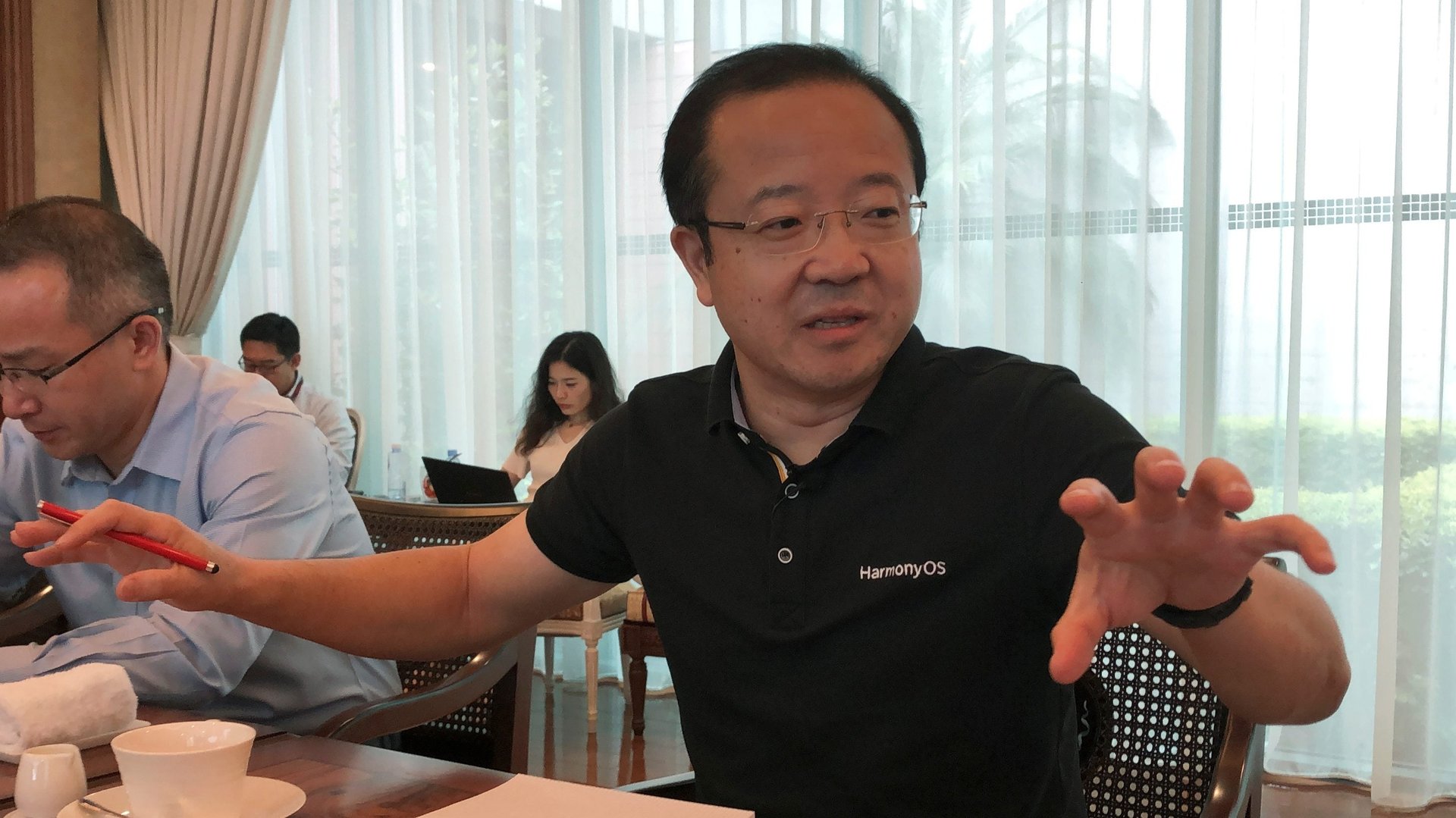Will Huawei’s Android knockoff appease China’s technology hawks?
Huawei used to be the world’s biggest phone maker—until the US imposed damaging sanctions in 2019. Among other things, it banned Huawei from using the official version of Google’s Android operating system on its smartphones. Now, the Chinese tech giant hopes it can stage a comeback by developing its own operating system: HarmonyOS.


Huawei used to be the world’s biggest phone maker—until the US imposed damaging sanctions in 2019. Among other things, it banned Huawei from using the official version of Google’s Android operating system on its smartphones. Now, the Chinese tech giant hopes it can stage a comeback by developing its own operating system: HarmonyOS.
Huawei rolled out HarmonyOS for its latest smartphones today (June 2) and announced it would update older phones to the new operating system throughout the year. The company’s stated goal is to reduce its reliance on Android, and develop a rival operating system that can compete with both Android and Apple’s iOS, which currently provide the operating systems for virtually every smartphone on earth. Independent reviewers, however, have concluded the operating system is just Android’s open-source code under a new name.
Tech observers are optimistic HarmonyOS can catch on within China, where there’s considerable political pressure to create homegrown alternatives to US tech offerings. And even if HarmonyOS is just a copy of Android, it at least has the imprimatur of a Chinese tech giant to make it seem like a true domestic alternative. But it’s less clear if HarmonyOS can become a true competitor abroad, especially given that US sanctions still prevent Huawei devices from incorporating popular apps from American tech giants like Google and Facebook.
What is HarmonyOS?
Huawei first launched HarmonyOS in August 2019, four months after Google revoked the Chinese tech giant’s license to use its Android operating system. Although the company claims HarmonyOS is “completely different from Android and iOS,” an independent review by Ars Technica found several telltale signs that it’s just a lightly modified version of Android.
The biggest difference between Android and HarmonyOS is that Huawei’s version isn’t officially licensed by Google, so it can’t include Google apps. Huawei has instead developed its own alternative apps, including a Google search replacement dubbed Petal Search, Petal Maps instead of Google Maps, and a Huawei AppGallery instead of the Google Play Store. HarmonyOS also doesn’t support major US-based apps like Facebook, YouTube, and Instagram.
Will HarmonyOS succeed in China?
There’s a good chance HarmonyOS can catch on within China, where authorities are eager to replace Western technology with homegrown alternatives. Beijing, for instance, has ordered all government offices to replace foreign computers and software with Chinese tech by 2022. As the technological rivalry between the US and China continues, HarmonyOS could become a more attractive alternative to Android and iOS, which are both controlled by American companies.
Plus, Chinese consumers aren’t likely to miss the US-based apps that aren’t available on HarmonyOS, because Facebook and its ilk are banned in China anyway. HarmonyOS does, however, support Chinese alternatives like Weibo and WeChat.
Huawei said it plans to have 300 million devices running HarmonyOS by the end of 2021, which would offer evidence that its operating system is viable in the Chinese domestic market.
Will phone makers outside China adopt HarmonyOS?
Huawei has said it will make HarmonyOS an open-source software available to any phone maker who wants to use it (much like the open-source Android operating system on which it is based). But HarmonyOS will be a harder sell outside of China, where consumers are more likely to want mainstream Western apps and the full Google Play Store, and governments are more likely to face diplomatic pressure from the US to abandon Huawei technology.